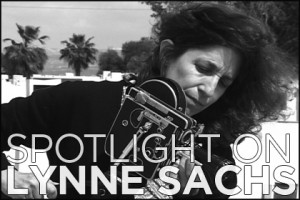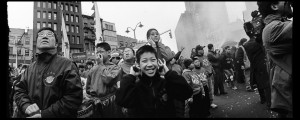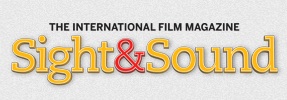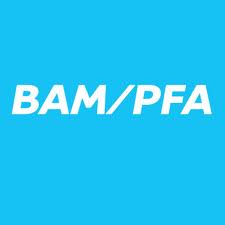March 11, 2014
Filmmaker Lynne Sachs and poet Paolo Javier on the dialogues between documentary and poetry, and politics and personal history.
https://bombmagazine.org/articles/lynne-sachs/
Last fall, I caught the premiere at MoMA of Lynne Sachs’s Your Day Is My Night, a documentary featuring NYC’s Chinatown residents, and became an instant fan. Focusing on the personal experiences of Chinatown’s shift-bed renters, Sachs engages her subjects in an innovative filmmaking process that privileges their agency and their community’s vitality—a process that ultimately produces a depiction of a people and place which radically departs from the usual Orientalism found in American cinema. The film is also remarkable for how it pushes the boundaries of documentary, locating its praxis in the liminal spaces of poetry and dreaming. This should come as no surprise to admirers of the prolific director and tireless experimentalist, whose astonishing body of work also includes short films, videos, cine-essays, and literary adaptations. On the eve of Sachs’s live film performance for Pratt University’s RiDE (Risk, Dare, Experiment) series, I engage this most restless of contemporary filmmakers in a conversation that sheds lots of warm light on her past, present, and future collaborations.
Lynne Sachs Today, I spent all morning in Central Park shooting black and white film in the snow.
Paolo Javier I’m glad one of us is enjoying the snow. Did the weather agree with your shoot today, and were you able to capture what you’d been dreaming about the past months?
LS For me the stark whiteness of the snow creates the sensation of a painter’s chiaroscuro, or a monochromatic tableau-vivant. When I am holding my Super 8mm camera, I am able to see graphic explosions of dark and light. Plus, lucky for me, my friend Sean was there to hold the umbrella and keep the snowflakes from dropping onto my lens. We just finished editing that film today. It’s called Drift and Bough.
PJ “The stark whiteness of the snow creates the sensation of a painter’s chiaroscuro, or a monochromatic tableau-vivant.” This sounds to me like a statement of poetics. Have any of your films developed from spontaneous, collaborative moments like this? More specifically, do you have a particular process for germinating work? Most folks associate documentary with a certain logocentrism, but your films—which are often hybrid—leave me with a palpable sense of play and surprise.
LS I think you are getting at something about my process of collecting images that maybe I didn’t really understand myself, until this moment. What I do in the world when I’m in the act of shooting film is ask myself how and if I can work in concert with something that exists in reality. When I shot my film essay Which Way is East (1994) in Vietnam way back in 1992, for example, I initially thought I was there to grapple with a specific historical period, the war in Vietnam, that it was my job to decipher everything I saw, as one of the first American filmmakers to be allowed to shoot in that country. Instead, however, I found myself waiting more patiently than I ever had for the right dappled light and shadow on a wall, or for a rhythmic pattern of bicycles and motorcycles to go by my bedroom window. For me, such plays of light are so exhilarating. Through these physical acts, the ideas of the film began to emerge.
PJ I really admire Which Way Is East, though I have to admit, I’m always skeptical of American interest in Vietnam and its former (near) colonies as a creative subject. Then I was struck by the date of your work: 1994. Your film doesn’t proceed as anthropology but generates tremendous intimacy, perhaps because you did not shoot or narrate Vietnam and her people as a subject but as a sensorial experience. It seems to be shot with a lot of wonder. As a result, it felt expansive for its half hour length, like the feeling of a cool breeze in an open window.
“Such plays of light are so exhilarating”—you take the words right out of my mouth. One scene that struck me was the shot of an empty café. The camera waits patiently for the golden sunlight to pour through the open ceiling. You see the Vietnamese language centered poetically in the inter-titles, then you hear it spoken by a native speaker—these are deeply generous and somewhat political gestures, given that the country’s orthography was developed by the colonizer. Nevertheless, this film—like a lot of your documentary work—doesn’t shy away from narration. Often, your film narratives and images collide in ways that open up unexpected meanings. As a poet, I tend to look for this, thinking along the lines of, Well, film is inherently Orphic. Would you speak a bit about your interest in narrative?
LS Wow, there are layers and layers for me to peel back after these observations. Right off the bat, I want to explore your initial presumption about an American heading over to Vietnam, or any so called “third world” country for that matter, with a camera in hand and a series of questions in your mind. I think this jumps directly into a conversation that is so fundamental to the whole practice of reality-based filmmaking, which got its start in Europe and the US (the proverbial first world) but set its sights on the beyond. The paradigm was always the hunt: shooting film, capturing an image, etcetera. So at the beginning of my career, I bought into that in my own awkward way. I took my camera to a far away place, I collected images, I recorded people’s thoughts, I brought it all home and it was mine. And if the film did well, I might even have a trophy to show for myself. So, when you ask about the narrative, I must admit that it was there that I began to challenge this way of working by allowing my own evolving critique of these practices to be manifest in my writing for the films.
This discussion brings to mind your essay “Pinoy Signs” in your book The Feeling is Actual. As a Filipino American, you take your own journey through the commercial signage of modern-day Philippines, revealing the clever, hilarious interweaving of American culture found in the country where you were born. I really love reading and seeing with you, discovering the twenty-four-hour restaurant Doris Day and Night, the Elizabeth Tailoring garment shop, or the Felix the Cut barbershop. Now I understand your love of punning! It’s a national pastime. Clearly, we are both intrigued and concerned by the omnipresence of American culture in places far from our borders.
PJ Yes, I am loved and regarded by my sister’s kids as their corny (p)Uncle Paolo.
Let’s talk about your short films and videos in relation to your documentaries and longer narrative work. Is there an immediate relationship that you see between the two? I think of how certain novelists, like Haruki Murakami, would engage in short fiction as a welcome break from the enormous demands of writing a novel, which, in his canon, tend to be pretty epic in scope and design. I ask this not to imply that short film and video are necessarily lighter or less serious than a half hour or feature. In fact, it’s your virtuosic range as film and video maker that compels me to ask what might inform their exchange or simultaneities.
LS Yes, you are right, the nature of the work that came with shooting and editing films like Still Life with Woman and Four Objects (four min., 1986) or Same Stream Twice (five min., 2012) can be very different from the labor involved in longer films. For one thing, you don’t need to write so many meta-descriptions (i.e. grant proposals) before creating them. The space between idea and image is reduced. I also don’t tend to show these works to other folks while I am creating them. No focus groups. No in-process rejections. Just the pure joy of making things. This creative gesture very much parallels the writing of poetry, which I have been doing almost all of my life (I am currently completing a two year project in which I am writing a poem for every year of my life, meaning fifty-two). Perhaps I could call the long films the “grand gestures.” You express this feeling very well in your poem “Ladies and Gentleman: Mr. Bill Murray!”:
Because I think you’re not feeling great
you want to make a grand gesture. I’ve been
a grand-gesture guy in the past &, in all likelihood,
I will continue to be one in the future. However,
I don’t feel as grand gesture-ish as I once did.
Probably a good sign, don’t you think?
PJ Aha!, I was right to sense the central presence of the poem in your films. I noticed that they offer more than just an engagement with, but seem to be fundamentally made up of, poetic texts: diary excerpts, letters, essays, poems. The sensibility in which you collage and detourné and juxtapose these with one another and the moving image strikes me as more poetic than novelistic, or maybe a blurring of the two, a la Gertrude Stein. I really loved hearing the recording of a group reading of “Lifting Belly” in your cine-essay The House of Science (1991), but in addition to American modernism, your dialogue with the poem seems absorptive of the innovations of other twentieth and twenty-first century poets, including the international surrealists, Black Mountain, members of Fluxus, Susan Howe, and Bernadette Mayer. This is my unnecessarily long segue to asking about your current project of writing fifty-two poems.
LS Discovering “Lifting Belly,” Gertrude Stein’s ever so physical, ecstatic belching of all things female, is critical to my work as an artist and poet. Whenever I don’t know what comes next, I think of this poem. Most of the voice-over in The House of Science comes from poetry I was writing during the production of the film. I think that poetry can be very connected to the way that we understand our own past. Right now, I am revisiting every year of my life by seeing grand public events in history through the lens of extremely private moments I am able to remember. I am fifty-two years old so I think of this project as Fifty-two Pick Up, like a card game. My next film project, Tip of My Tongue, will use this writing as a starting off point. So you can see, it’s all kind of connected.
You also mentioned the Black Mountain artists and Fluxus. John Cage, one of the Black Mountain artists, had a love of the unrepeatable symphony of the city. Discovering his work made me a better listener. I heard about George Maciunas and the rest of the Fluxus folks when I was twenty years old. It pushed me into some very wacky performance art I produced with my brother, Ira Sachs, in our hometown of Memphis, Tennessee one Christmas break in 1980!
PJ Awesome. If I remember correctly, the last section of The Feeling Is Actual was assembled while I obsessively re-read “Lifting Belly” and Stanzas in Meditation, and re-watched Wong Kar Wai’s movies. I made this long poem with the film editing process very much in mind too, collaging and splicing language; employing chance procedures; and relying only on the visual experience and sense of words on the page. Stein’s writing is autobiographical but, to be sure, I experience this foremost in her English which moves exuberantly between the three or four other languages she grew up hearing and speaking. Perhaps what I find most affecting about your films, spanning documentary and short works, is their own fearlessness with autobiography. Not only are their texts consistently diaristic and epistolary, but also their images and productions include family members—your cousin Sandor Lenard, and two daughters as subjects/co-authors; your sister, Dana, and your husband, the fantastic filmmaker Mark Street, as collaborators. I was moved to tears by the inclusion of your own recording of your daughter’s birth in A Biography of Lilith (1997), and I couldn’t help but read it as both a nod to and de-centering of Window Water Baby Moving, given the feminist discourse of your film.
LS No one who makes experimental films can deny the impact of Stan Brakhage! I actually wrote an essay about his Window Water Baby Moving which I call “ Thoughts on Birth and Brakhage.” As a mom and an artist, I was extremely inspired by the way that he integrated his family into his daily practice as an artist. If you separate the two, both suffer. I collaborated with my sister Dana Sachs on Which Way is East: Notebooks from Vietnam. In the early 1990s, she was living in Hanoi and had already become proficient in Vietnamese, so her long-term presence in that country gave us the chance to contemplate our relationship with that place on the earth as two American women who had “experienced” the war through television as children. Then a few years later, I made Biography of Lilith. That film’s production straddles the birth of my first born daughter Maya in 1995 and that of my second daughter Noa in 1997. Just because I was pregnant and ever so uncomfortable, I did not want to stop making art. Their presence in my life was most definitely a catalyst to my thinking. So why not reflect that in the work? Later I made Same Stream Twice (2012), which begins with Maya running circles around me at age six and then at sixteen, and Noa, Noa (2006) which observes Noa playing in the woods and exploring the city from ages eight to five. Yes, I intentionally made her grow younger—that’s the freedom that film provides.
The Last Happy Day (2009) is part of a three part series I made about the ways that you can and cannot know another human being. I wanted the film to be contemplative, surprising, horrific and whimsical. A very tall order, so full of contradiction. The film is an experimental portrait of my distant cousin Sandor Lenard, very much in the spirit of W. G. Sebald’s novels The Rings of Saturn or The Emmigrants. When I invoked the perspective of Sebald, I was able to inhabit my cousin’s past as if it were my own present. The one-directional flow of time became very simple to subvert. Absolutely any idea was fair game, which was morally risky in some ways because Sandor was a person whose life was turned inside out by the events of the Holocaust. I never knew him in real life, but I came to know him in a very profound way through the letters he sent to my uncle. Because Sandor Lenard was “family,” I assumed I could enter his life experiences in a deeper way than I ever had before in a film. In some ways, this was the movie I first wanted to make, beginning at the age of sixteen and finally finishing at forty-eight!
My brother, Ira Sachs, who is also a filmmaker, and I have been deeply involved in trying to document on film the range of feelings we have about our father. Ira’s narrative feature, Forty Shades of Blue is very much a veiled portrait of him, and I have been shooting my film about him for about twenty years. I practically have an archive of 16mm on this “subject.” The surprises never stop. Last year we found out we have two half-sisters we never knew before. One might assume that would make for good material, but it is also extraordinarily complicated to reckon with so many things that real life tosses your way.
PJ Your Day Is My Night started out as a theatrical performance before evolving into a longer film, and while its location and subject may be New York City’s Chinatown, cinematically, it evokes the oneiric state, with its pacing more attuned to the disjunctive rhythms of the city poem (Frances Chung, Federico Garcia Lorca) rather than the narrative cohesions that most folks expect of documentaries about immigrants in this country.
LS I am so glad you brought up Federico García Lorca, whose poem “Sleepless City (Brooklyn Bridge Nocturne)” stands at both the center and the periphery of Your Day Is My Night. Like anyone who arrives in New York City for the first time, Lorca was both overwhelmed and inspired by the cacophony of this city. Since my film deals with this particular aspect of the immigration experience, I wanted to include lines from Lorca’s poem. But there is also another side to the story. When Lorca, this young poetic soul, returned to his own mother country of Spain in 1936, his overtly anti-fascist beliefs and his homosexuality disturbed the powers that be in Franco’s dictatorship. And so Lorca was assassinated. I saw parallels between the oppression of the state in Spain and the horrific experiences my Chinese collaborators experienced during Mao’s Cultural Revolution.
Stylistically, I also wanted to find something close to Lorca’s “oneiric state” in Your Day Is My Night. As you know, the film took the experience of total strangers sharing beds in shifts as a starting point. During the first six months of editing, I tried either to tell this story by depicting real lives in today’s Chinatown or to invent every bit of it through the construction of a fictional universe. Both Sean Hanley, my editor, and I were very bewildered by which direction to go in, so I showed the work-in-process to Chi-hui Yang, a New York film programmer and writer, who pushed me to follow the dream muse that was tugging at me all along. Finally, a light bulb went off and I issued myself a license to pursue absolutely any formal strategy that came to my mind. Sean and I pulled the film out of the computer and threw it on a series of stages as a live film performance at Arts@Renaissance in Greenpoint, Proteus Gowanus Interdisciplinary Gallery, the NYPL in Chinatown, Maysles Cinema in Harlem, and University Settlement in the Lower East Side. Now I have the live performance bug, and I am never looking back.
PJ By the way, I’m particularly adoring of Your Day Is My Night’s sound design and have watched it purely for its ambient riches. In fact, last week, when my wife and daughter spent the weekend at the in-laws’, I got over my insomnia by listening to it in the background. I get that film is as much an aural experience as a visual one, but usually in mainstream movies the former is subordinate to the latter. I don’t feel this is the case in a lot of your work, certainly your short films, but also in longer ones such as The House of Science and A Biography of Lilith. What role would you say sound plays in shaping your films and videos in the early stages of creation?
LS Ever since I started to make films, I have tried to make music with noises from the world. With The House of Science and Biography of Lilith, I included what I saw as the silenced voice of the body—sneezes, urinating, panting during childbirth, sexual acts—as a form of feminized music. More recently, I worked with the renowned sound artist Stephen Vitiello on Your Day Is My Night. Together, we were able to bring our shared love of John Cage’s ideas to the collection and shaping of the film’s sound design. We listened in the deepest way we knew how to the familiar and the exotic sounds of Chinatown.
PJ Most folks take for granted the name and existence of “Chinatown,” perhaps de-sensitized or oblivious to its (history as a) racialized space and status as a municipally-sanctioned ethnic ghetto in a part of Manhattan that’s been otherwise devoured by merciless gentrification. I particularly admire how Your Day Is My Night resists the temptation to exoticize Chinatown’s people and environs through the usual cinematic tropes of food tourism, absence of English-speakers, gong soundtrack, etc. Your very decision to involve your performers in such an innovative project challenges the perception of Chinatown residents as culturally static. The finished film’s ravishing photography and experimental sound design revise how cinema sees and hears this most American of neighborhoods. I see tremendous sympathy between your film and the achievement of Wong Kar-Wai’s Happy Together, a work that alters the way globalized Chinese migrant experiences are portrayed in films, novels, etc.
LS Well, all of these intertwining issues really come into play when you are making a film that takes you out of your own community and into another. Of course, I was very aware of the narrow spectrum of representation of the denizens of New York City’s Chinatown. Those kinds of Hollywood images haunted me really. In fact, when I first chose the seven people who are featured in my film, I realized that most of them had already worked as extras for the movie industry at some point in their lives. To my mind, they had been treated like an aggregate of Chinese immigrants (no doubt carrying the proverbial suitcase) rather than a group of individuals with very specific, personal stories. Even after I finished the film, I was so consumed by this issue of images of Chinese immigrants in NYC that I decided to curate a program on it called “We Landed/ I Was Born/ Passing By: NYC’s Chinatown on Screen” for the Anthology Film Archives in January of this year. The entire five program series is dedicated to Chinatown poet Frances Chung. Ever since you introduced me to her extremely personal vision of Chinatown, I knew that I would find a way to incorporate her work into a project.
You also mentioned Wong Kar-Wai’s Happy Together, which ties right into this conversation in some very interesting and personal ways. Did you know that I studied this movie very closely before shooting Your Day Is My Night? The film guided me both narratively and aesthetically. Happy Together depicts two very cool, but alienated Chinese men living in Buenos Aires. In the film, the camera suggests that a bedroom can become a refuge from the confusion and craziness of a city that is unfamiliar and, in this case, where a protagonist is not able to communicate verbally in the local language. Wong Kar-Wai taught me how to film in darkness, how to move my performers in very small spaces, and how to explore global issues in a room in which you can usually spread your hands from one wall to the next.
PJ Not sure I told you, but Happy Together, perhaps more than any other text/film/painting/poem, inspired the making and completion of The Feeling Is Actual. Between 2005 and 2009, I practically lived and breathed that film, Wong’s Chow Mo-Wan trilogy, and Christopher Doyle and William Chang’s filmographies. This obsession resulted in a book that is supplemented by a short video that I shot in two hours with friends at Deitch Projects, and whose published “script” in the book I typically perform as the video’s live narration and soundtrack.
Which is a rather long-winded way of saying that I know Wong’s film by heart, but also that I recognize Your Day Is My Night’s dialogue with Happy Together via the casting of Veraalba Santa’s character Lourdes. In Wong’s film, you see and hear the long and painful breakup of this Chinese couple, rendered even more alienating by the film’s Spanish-speaking locales. You reverse this cultural dynamic in Your Day Is My Night, casting a young Puerto Rican American woman in a decidedly Cantonese and Mandarin-speaking apartment building and neighborhood. The difference with Veraalba’s transplanted character, of course, is that she isn’t subject to discrimination and hostility in Chinatown in the way that Leslie Cheung and Tony Leung’s are in Buenos Aires.
Let’s talk about your next project, which finds its beating heart in performance again. How might your interest in performance with your new work proceed or depart from previous ones? Do you sense that this might lead to another bigger film project?
LS As part of Pratt Institute’s RiDE (Risk/Dare/Experiment) speakers series, the school invited me to give a talk about the recent introduction of performance in my work. On Tuesday, March 11, 2014, I will present the lecture “Taking a Documentary Detour” in which I will discuss my own work as well as the dramaturgy of French theater director Ariane Mnouchkine (Theatre du Soleil), Augusto Boal’s Theater of the Oppressed, the Wooster Group, and Jia Zhangke’s mixing of artifice and reality. Then a group of six very brave Pratt students will collaborate with me on a live film performance that includes personal documentary material and improvised fictions.
I am obsessed with the detritus that we as human beings leave on the earth. In addition to the marks we make on our beds (which I explored in Your Day Is My Night), there are also the temporary marks we leave in a room: our hair, flakes from our skin, the residue from a cough, sexual fluids, stains. Apichatpong Weerasethakul’s Morakot (Emerald) from 2007 is an exquisite, ethereal video about the thousands of ghosts that inhabit a single hotel room. With this work in mind, I asked the Pratt students to imagine one person who had lived previously in the room where they currently live today. This person could be a composite of the student him or herself and an invented character. In this way, the work they do with me on this project becomes a document of their rich imaginations in the year 2014. I want us to get at something that is authentic, raw and not necessarily real, like what you are talking about here in your ode to cinema:
—I am going to show you my warts, or
my tighty-whities with a huge rip in the center, so that
in-between our final scenes together, neither one of us ends up
shooting too many close-ups
We decided to call this new short piece Extra Large Twin. The Pratt show will be our premiere!
PJ Speaking of Weerasethakul, cinema strikes me as a particularly haunted art form, but your virtuosic films and video, which embrace the past, present, and future of moviemaking technology rather seamlessly, are full of the spirits of the living, present day. Live performance and collaboration obviously engage with the immediate moment, but I’m curious to know how you might see film and video layering the new work if, indeed, you plan to incorporate both into it.
LS I think cinema can create an exhilarating confusion between a ghost and a memory. The intermingling of the two on the screen allows for a very particular dialogue between your imagination and your past.
The film I am beginning to work on now is called Tip of My Tongue. Similar in many ways to both Your Day Is My Night and Extra Large Twin at Pratt, it will be a performance and hybrid documentary. Working off my fifty-two poems from each year of my life, I plan to look at the last half century through the experiences of six New Yorkers born in the early 1960s. Like Weerasethakul, I want objects such as buttons (from an old dress or a presidential race), empty bottles (aspirin, wine, or milk) or hair (a baby’s, a dog’s or an old woman’s) to take on a magnified presence on the screen. We will talk about historical time—television broadcasts, fat headlines, big weather, economic upheavals, distant bombings—and from there we will move to the time we each own—torn away, buried, malnourished, un-photographed. After I transform these anecdotes into story-hybrids, the participants will “perform their own lives.” Each person will cycle through the time period, exploring distinct chapters—such as 1963, 1975, 1989, 2001, and 2012. Of course, my dream is that this piece will turn into a fearless act of self-examination: together we will construct a Cubist-inspired composite of life from the early 1960s through the first decades of the new millennium.
Perhaps, by working with performer/collaborators who have lived through the same years that I have, I am building a mirror that could help me understand myself a bit better. Just in the last few days, I have realized that I am entering the storm of a new film. It follows me down into the subway, to the stack of dirty dishes, and into the shower. This is a good place to be.
For more on Lynne Sachs and her work, visit her website.
Paolo Javier is the current Queens Poet Laureate, and author of Court of the Dragon (Nightboat Books, forthcoming 2015). He is the curator of the forthcoming poetry festival at the Queens Museum, ETERNiDAY, which will include Lynne Sachs’s Your Day Is My Night.












